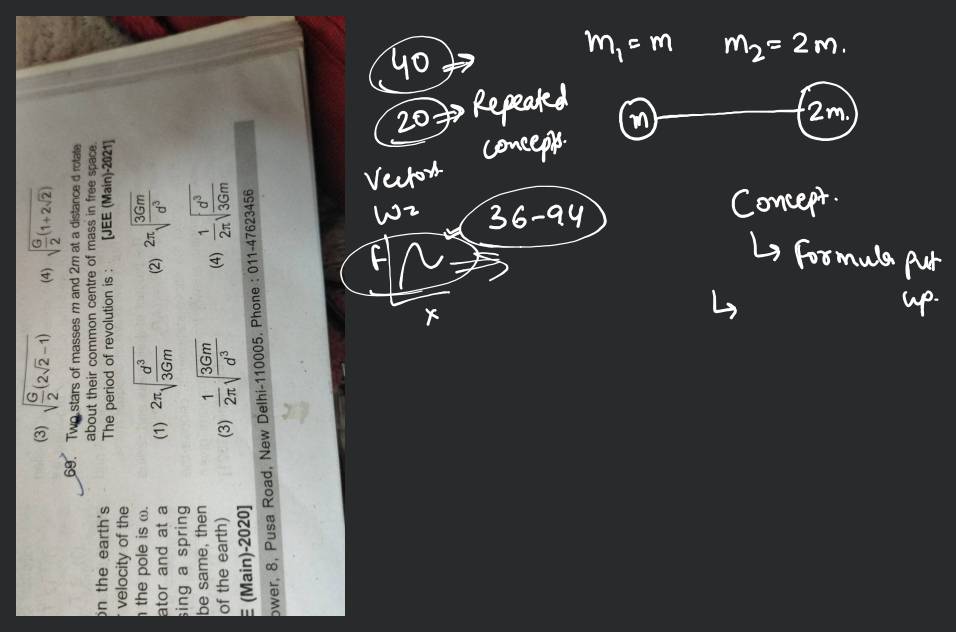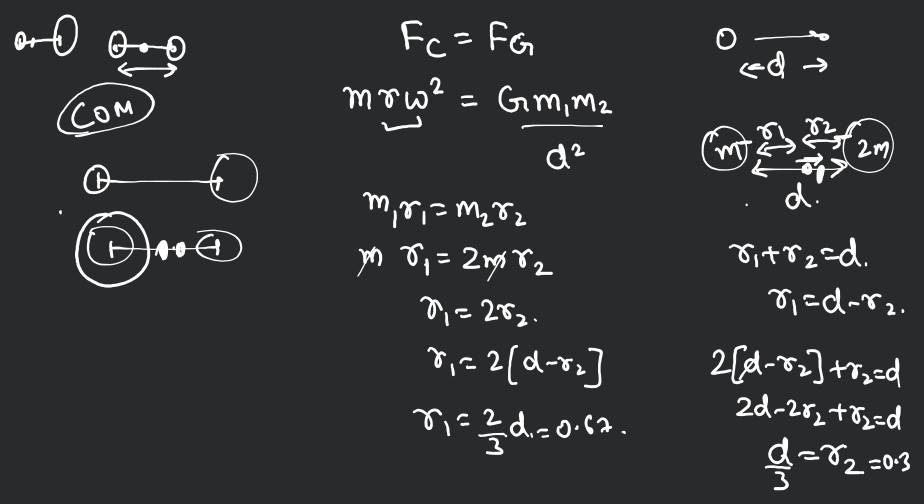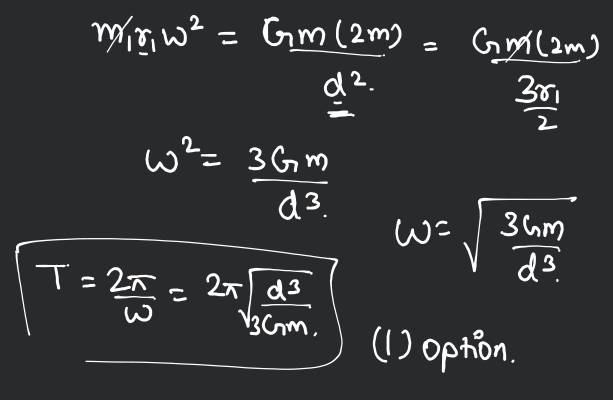Question
Medium
Solving time: 2 mins
Two stars of masses m and 2 m at a distance d rotate about their common centre of mass in free space. The period of revolution is:
Found 4 tutors discussing this question
Discuss this question LIVE
6 mins ago
 Text solution
Text solution Verified
Verified
Was this solution helpful?
34
Share
Report
Filo tutor solutions (5)
Learn from their 1-to-1 discussion with Filo tutors.
8 mins
Uploaded on: 11/20/2022
Was this solution helpful?
121
Share
Report
8 mins
Uploaded on: 10/20/2022
Was this solution helpful?
90
Share
Report

One destination to cover all your homework and assignment needs
Learn Practice Revision Succeed

Instant 1:1 help, 24x7
60, 000+ Expert tutors

Textbook solutions
Big idea maths, McGraw-Hill Education etc

Essay review
Get expert feedback on your essay

Schedule classes
High dosage tutoring from Dedicated 3 experts
Questions from JEE Mains 2021 - PYQs
Question 1
Easy
Views: 5,892
Question 2
Easy
Views: 6,835
Question 4
Easy
Views: 5,263
Practice questions from System of Particles and Rotational Motion in the same exam
Question 1
Medium
Views: 5,877
(a) for any
(b)
(c)
(d)
Question 2
Medium
Views: 5,546
Question 3
Easy
Views: 5,222
(a) solid sphere
(b) hollow sphere
(c) ring
(d) All same
Practice more questions from System of Particles and Rotational Motion
Question 1
Medium
Views: 5,943
Question 2
Hard
Views: 6,252
Question 3
Hard
Views: 6,072
Question 4
Easy
Views: 5,572
Practice questions on similar concepts asked by Filo students
Question 2
Views: 5,927
Question 4
Views: 5,965


Stuck on the question or explanation?
Connect with our Physics tutors online and get step by step solution of this question.
231 students are taking LIVE classes
| Question Text | Two stars of masses m and 2 m at a distance d rotate about their common centre of mass in free space. The period of revolution is: |
| Updated On | Mar 8, 2023 |
| Topic | System of Particles and Rotational Motion |
| Subject | Physics |
| Class | Class 11 |
| Answer Type | Text solution:1 Video solution: 5 |
| Upvotes | 604 |
| Avg. Video Duration | 10 min |






